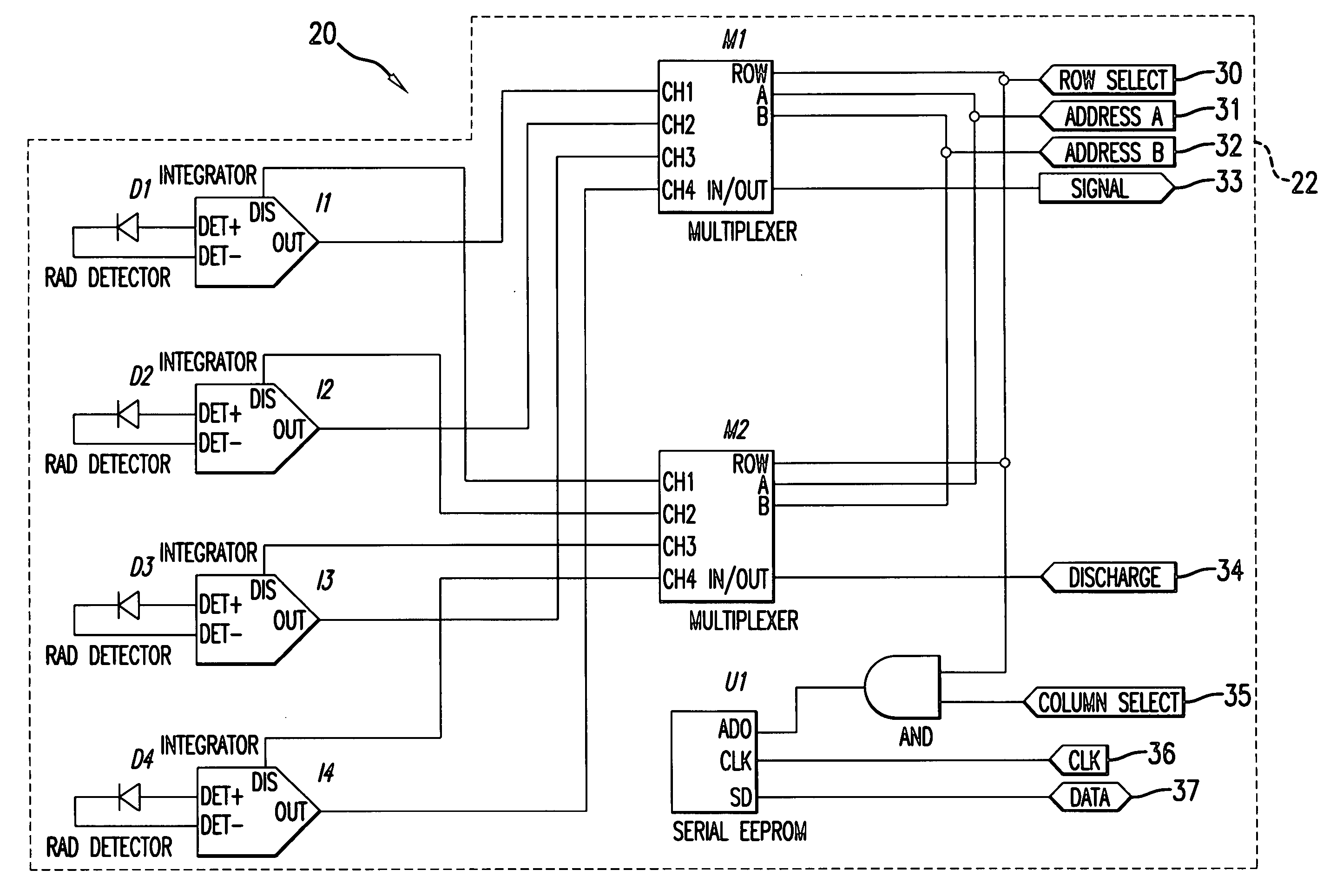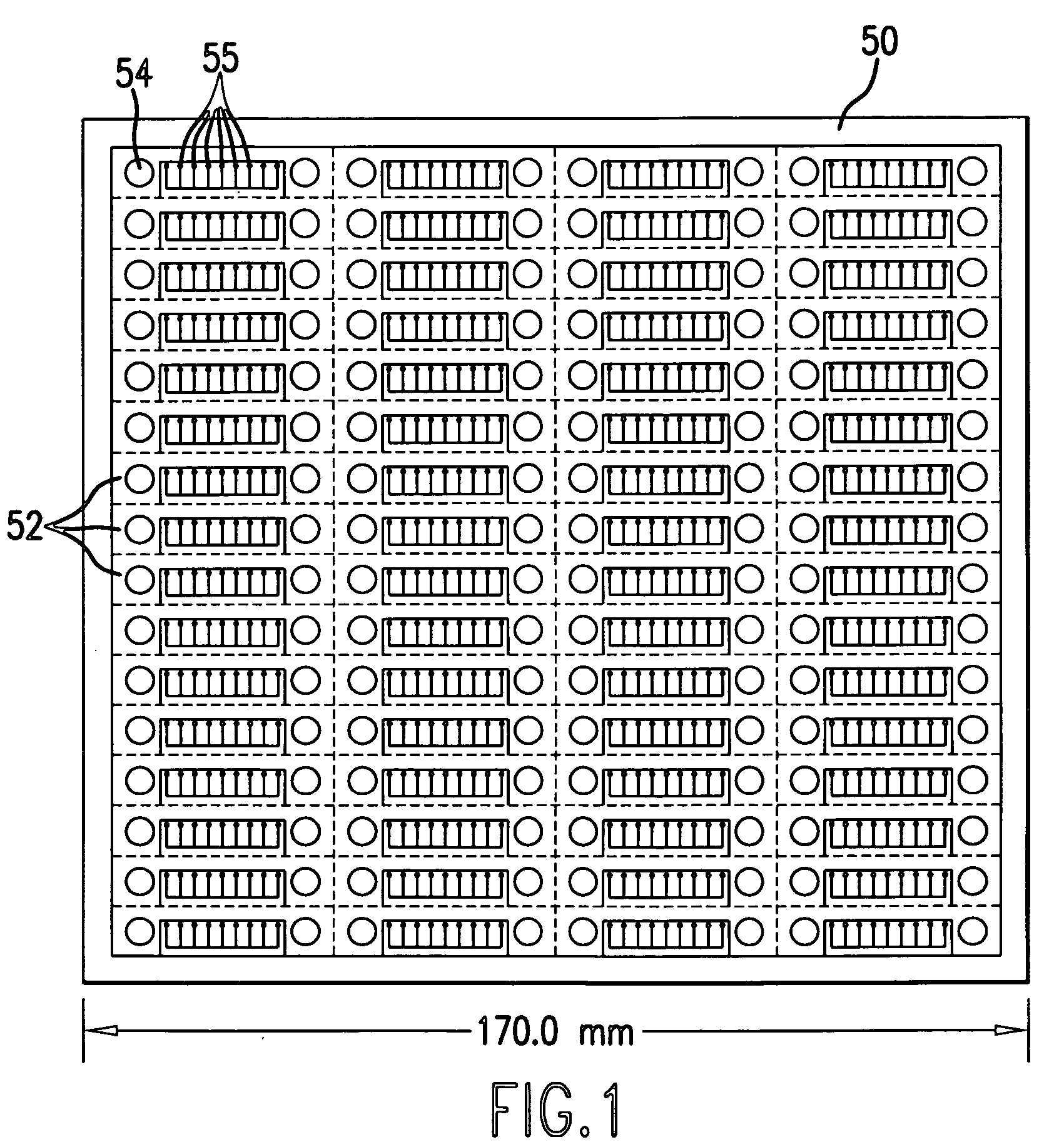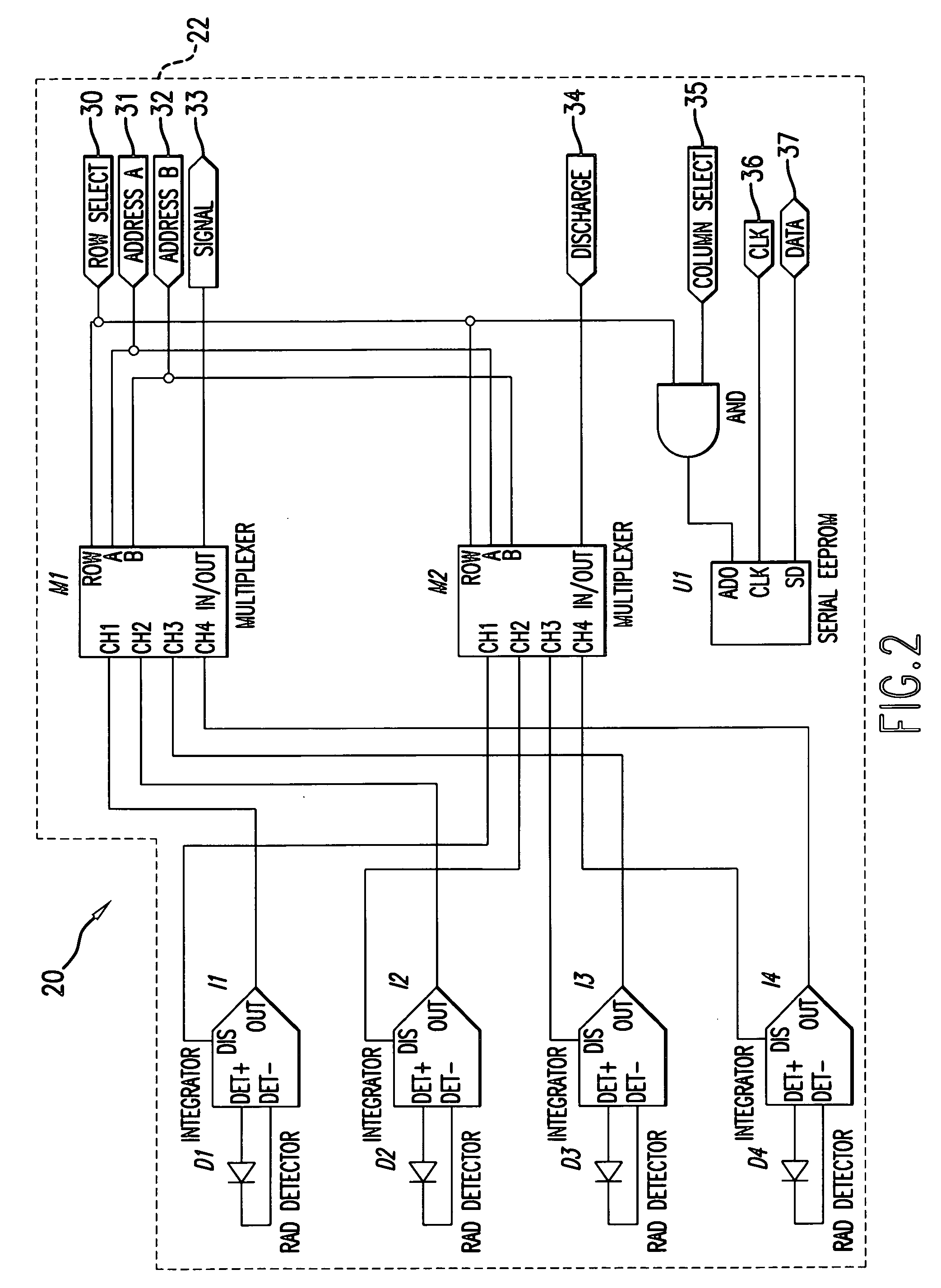Method, apparatus and device for real-time characterization of a radiation beam
a radiation beam and real-time characterization technology, applied in the field of radiation beam real-time characterization methods, apparatuses and devices, can solve the problems of impossibility of analyzing the imrt environment, the complexity of instrumentation is immense and costly, and the beam characterization instruments that can handle pre-imrt conditions quite well are insufficien
- Summary
- Abstract
- Description
- Claims
- Application Information
AI Technical Summary
Benefits of technology
Problems solved by technology
Method used
Image
Examples
Embodiment Construction
[0028] The invention disclosed herein enables a real-time characterization of a radiation beam--whether in therapy or any other application--by employing an array of detectors. The device may employ solid state (e.g., diodes), ion chambers, or any other type of radiation detector or combination of detectors.
[0029] Referring to FIG. 2, a radiation detector module according to the invention is shown.
[0030] The module 20 is composed of individual radiation detectors (here, shown as diodes D1 through D4) are assembled into a basic array of elements, such as on a circuit board indicated by the dotted line 22. Alternatively, the detectors can be made as an integrated circuit on a semiconductor chip with all connections shown in FIG. 2 and other components included as components on the chip. As can be seen, the diode-type detectors D1-4 have outputs which are fed to integrators 11 through 14 for onboard or local processing the integrated signals are channeled through multiplexers M1 and M2...
PUM
 Login to View More
Login to View More Abstract
Description
Claims
Application Information
 Login to View More
Login to View More - R&D
- Intellectual Property
- Life Sciences
- Materials
- Tech Scout
- Unparalleled Data Quality
- Higher Quality Content
- 60% Fewer Hallucinations
Browse by: Latest US Patents, China's latest patents, Technical Efficacy Thesaurus, Application Domain, Technology Topic, Popular Technical Reports.
© 2025 PatSnap. All rights reserved.Legal|Privacy policy|Modern Slavery Act Transparency Statement|Sitemap|About US| Contact US: help@patsnap.com



